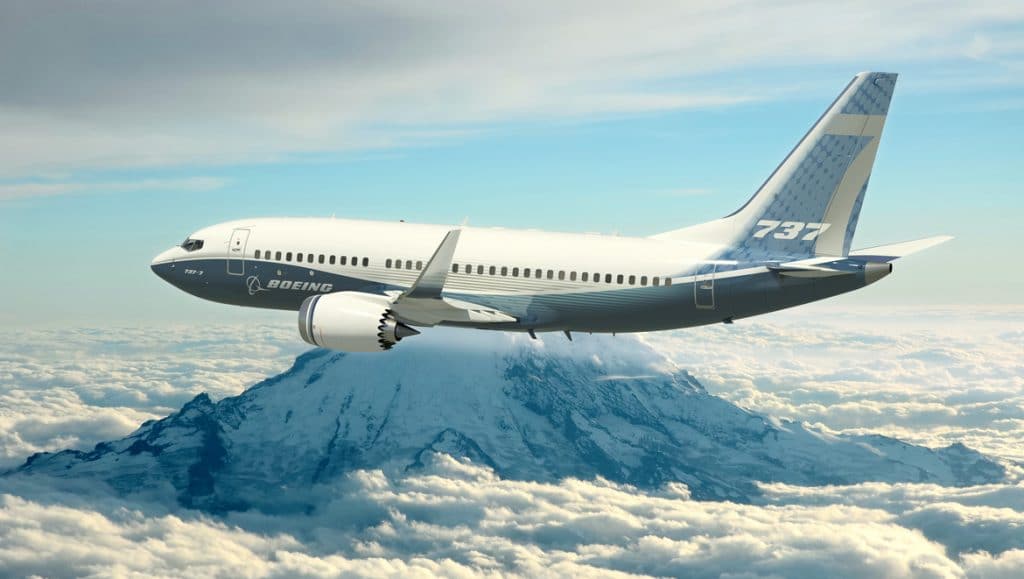
Boeing has announced that it will slash its production output across all its models, following a larger-than-anticipated quarterly loss, and delay its 777X program to 2022.
Included in its business changes will be a mammoth reduction in the production of its twin-engine jets, the phasing out of its 747 production, and the delay of its first 777X delivery.
This comes as the aviation industry continues to reel from the pressures of COVID-19, and the unprecedented drop in air travel demand. Boeing also faces pressure from tensions between the US and China.
In a letter written to staff, Boeing chief executive Dave Calhoun announced that the company would reduce its manufacturing figures on the 737, 777 and 777X, as well as the 787.
Now, Boeing has cut its 787 output down to just six per month for 2021, down from a previously announced expectation of seven per month.
It is the third cut to output for the Dreamliner in the last 12 months, when output sat at a record high of 14 aircraft per month.
Meanwhile, output for the 777 ‘mini-jumbo’ and its sister model, the 777X, will be cut to a combined total of two aircraft per month, down from a previous expectation of three.
Boeing’s widespread production cuts come following calls to implement such a strategy, as airlines struggle to take on their deliveries. The announcement is likely to put pressure on Airbus to do the same.
So far, the only adjustment Airbus has made to its production output is reducing the rate of A350 production “from six to five aircraft a month for now”, according to the company.
777X program to be delayed to 2022, more job cuts anticipated
The Chicago-based manufacturer stated that it would also delay the delivery of the 777X program by a year, now due to enter service in 2022.
“Our industry and our company are weathering challenges like none we have ever experienced in our lifetimes,” Calhoun said.
Boeing also warned staff that more job cuts could be on the horizon, as financial results continue to come in under expectation due to the pandemic.
“We’ll have to further assess the size of our workforce,” Calhoun said.
737 MAX deliveries to resume in Q4
Adding to the financial strain of the pandemic is the safety concerns of Boeing’s troubled narrowbody aircraft, the 737 MAX, which was grounded around the world following investigations into two fatal plane crashes.
The process of getting the plagued plane recertified is already underway, and Calhoun announced that deliveries of the 737 MAX would resume in the fourth quarter.
This is several weeks after previous estimates, and suggests that the MAX may not return to service in the US until early 2021.
Production expectations for the MAX have also taken a hit, with the company pushing its target of 31 jets per month into 2022, a year later than previous.
“We still see a path to positive cash flow in 2021,” CFO Greg Smith said, noting it would take a year after MAX deliveries begin to clear a backlog of around 450 parked jets.
Streamlining Dreamliner production
In other news, Calhoun stated that Boeing was also looking into whether or not to consolidate its 787 Dreamliner production to one location, as it cuts down its output, which would likely result in an uncertain future for operations in its Everett hub in Washington.
Currently, production of the 787s is split between Everett and North Charleston, South Carolina, however only the South Carolina facility can accommodate for the largest of the aircraft, the 787-10.
Smith said he anticipated Boeing would be able to increase 787 output from six to 10 or 11 per month, as time progresses.
Boeing ends 747 production
At the same time, Boeing also confirmed that the very last of its renowned 747s would be rolled out of the factory by 2022, marking the bittersweet end of an era for the aviation community.
The 747 has been phased over a number of years, as smaller, less costly and more fuel efficient models come to market.
The COVID-19 pandemic has undoubtedly accelerated the retirement of the 747, with many seeing their final days during this period.
The aircraft changed the history of aviation for good, democratising international air travel, and will not be forgotten.











